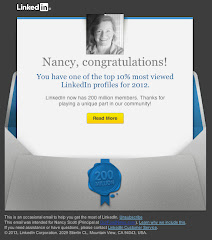• Wrangler asked its customers to design the next pair of jeans. “They have incredible ideas about what they want their jeans to look like and how they want them to function. Now, the ability to collaborate with consumers is at an all-time high, thanks to the ever-growing digital and social space. We thought this was the perfect time to put the design process directly into consumers’ hands.” From PromoMagazine.
• Musicians are cashing in on consumers’ demand for immediacy and participation. Coca-Cola hosted a 24-hour live session to write and produce an original song from Maroon 5, created while fans watched and interacted with band members.
• Malcolm Faulds pointed out in AdAgeCMO Strategy, “With a few candid words, the right highly connected consumer can get people all over the web stampeding to buy products.” Faulds’ company. BzzAgent, recently did an in-depth study of so-called “brand advocates” and tells marketers five ways to reach this influential group:
• get the products in their hands;
• display your stuff on Amazon.com; brand advocates go there to check out product reviews and stay on top of what’s new;
• feed brand advocates a steady steam of fun stuff to engage with and share with colleagues;
• be genuine and never manipulate, but engage with advocates on social networks;
• honor your brand advocates by featuring them on Twitter, Facebook, in ads, and elsewhere.
• A Mashable article by Leyl Master Black in early June agrees that customers should be rewarded for their loyalty. Black suggests offering Facebook fans exclusive discounts, coupons, and content; tying charitable donations to the growth of the fan base; responding to each and every comment or listening in other innovative ways; and recognizing individual fans.
• In his May 26 blog post, Jacob Morgan, principal at Chess Media Group, writes, “Collaborating with customers isn’t about sending them offers, news, information, or messages. Collaborating is about putting the customer at the center of how your organization conducts business, it’s about integrating the voice of the customer … This is far more powerful than simply using social tools and technologies to get your message across … So when you say you want to collaborate with your customers, do you really mean that, or are you really talking about ways to use social channels to spread a message?”
Inviting and encouraging commentary on social media may be a good first step in collaboration. A June 27 article at Marketing Vox reports that The Rockville Central blog abandoned its website and began posting on Facebook, instead. The result? More readers began interacting with the stories through comments and “likes.” Facebook posts that promoted Rockville Central stores are netting about 2,000 “impressions” each, per month.
The Washington Post covered the blog-to-Facebook story also. The Post interviewed Reggie Bradford, chief executive of Vitrue, a social-marketing software firm whose job it is to place a value on social pages. Viture released research that attempted to place a media value of $3.60 per “like” on individual Facebook connections. The Post article also cited findings from a Fortune 100 companies study by Adgregate Markets. Of the Fortune 100 companies surveyed, 68 percent said they're experiencing shrinkage in unique visits to their website, with an average drop of 23 percent. Out of 44 of those companies sampled, 40 percent found that they had higher traffic volumes to their Facebook page, according to this Retail Online Integration wrap-up of the study.
-- scrubbed by MarketingBrillo


